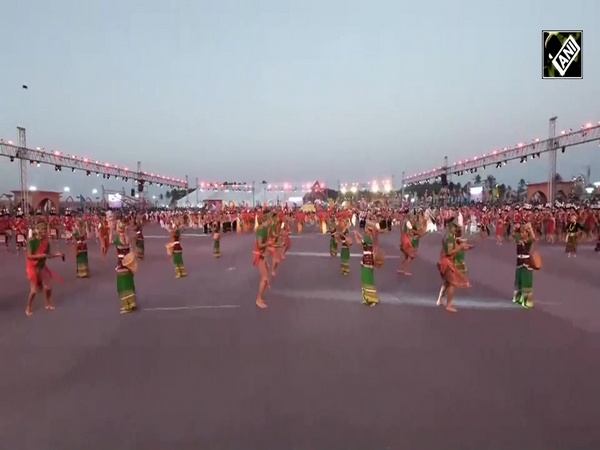Chirata, a successful agri venture for villagers in Bhutan's Samdrup Jongkhar
Mar 29, 2023

Thimphu [Bhutan], March 29 : Chirata, a medicinal herb considered critically endangered has become one of the main sources of income for the villagers of Lauri Gewog in Bhutan's Samdrup Jongkhar, according to The Bhutan Live.
About 60 households in the gewog today cultivate chirata. They were encouraged to cultivate the plant following demand from the popular French luxury fashion house Chanel. The company uses it as one of the ingredients in a face oil known for its rejuvenating properties.
Dorji Drakpa from Lauri chiwog grows chirata with other vegetables over 50 decimals of land. He expects to produce about 100 kilograms of chirata this season.
Dorji says it is difficult to harvest chirata from the wild as it has become scanty.
"There are many differences between wild and home-grown chirata. The production is more while cultivating it whereas it is difficult to get even a kilogram from the forest. At home, three plants can produce one kilogram," said Dorji as quoted by The Bhutan Live.
Dorji last year earned about Nu 20,000. If the plant grows well he is expecting to make about Nu 70,000 this time.
"If we can work and cultivate more, it is profitable. Last year, I cultivated less as I have to do other work in the village and that is why I could earn only Nu 20,000. If I focus only on chirata then I think I can earn Nu 50,000 to 60,000," said Dorji.
The villagers started cultivating chirata at home in 2015 on a trial basis after the herb became scanty in the wild.
"We sow the chirata seeds in the garden and transplant them. Cultivating chirate is better. Collecting from the forest is difficult. Last year I earned about Nu 70,000 by selling chirata," Tendi Zangmo, a resident, told The Bhutan Live.
"We have to work hard, the plant becomes ready for harvest only after three years. Cultivating chirata is profitable as we don't do other agricultural work. So, cultivating chirata is our only source of income," said Tenzin Wangchuk, another resident.
"It is profitable so long as we work hard. By cultivating chirata, we can improve our living standards," said Tshedon, also a local.
A kilogram of the cultivated chirata fetches Nu 750 whereas the price drops to Nu 200 for the herb collected from the wild.
It takes three years for the plant to get ready for harvest after sowing the seeds. The villagers harvest it in September. They sow chirata seeds every year in different fields to ensure they can continue producing the herb annually.
Villagers in Lauri, last year, produced about 1,740 kilograms of chirata. The National Biodiversity Centre helps them with marketing.
Chanel regards chirata as a highly rare ingredient sourced from Bhutan. The company processes the herb after harvest to obtain a custom, skin-reviving active ingredient complex.
Besides importing, the villagers use it to cure fever and constipation.



















